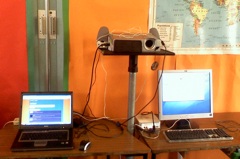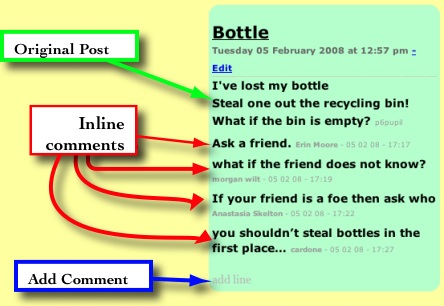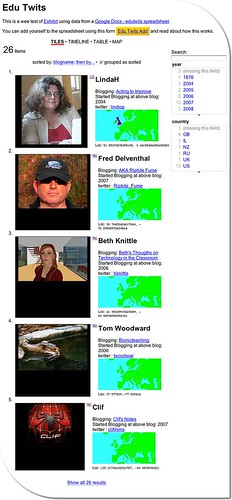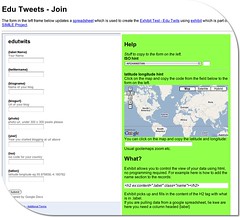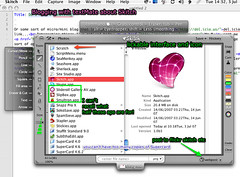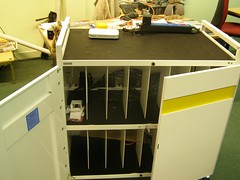
I’ve got the the end of a quick first week back at school. The first time in a couple of years I’ve had a class to myself, year before last I was doing ICT and last year involved a lot of learning support and team teaching. I am also back in Primary Seven.
A shock to the system as all my mushroom boxes have vanished and I need a quick trip to Pound Land.
I am beginning to get the classroom they way I want, I have a projector and a big bit of white paper on the wall along with a gyro mouse and wireless keyboard. A networked xp laptop and non-networked mac mini are positioned beside the projector so that I can easily switch back and forth between platforms. So far I am missing the ability to draw quickly on the board but enjoying the shadow free screen.
The children have used ICT in the previous year a fair bit, mostly research, word-processing and powerpoint and I worked with them on the wiki for a Sound & Light project.
I always like the first week or two of term and other times when the timetable and curriculum is not so fixed in stone and decided to get the children introduced to online tools, cameras blogging etc.
We got the Photo -a-day How does our Garden go galler off the ground to start with.
Next we started with the Simpsons Movie site making avatars which, I hope, will be used throughout the year as signatures on blogs and wikis. We had to use a horrible amount of kluding to work around the fact that we do not seem to be able to download the files on the school pcs (unblocking popups not withstanding). This become a good exercise in lots of things: print screen, cropping in picture manager and exporting as jpgs, allowing me to harp on about files etc. I had to download the saved images at home to slap together the pic at the top.
The children had more cropping to do to get a nice wee head shot of their avatar too.
We worked on one of my favourite start of session lessons, Bio-Poems, these use a strong template and give the children a lot of fun, this year we blogged these with the Simpson head-shots on the Sandaig Poets blog which give everybody a chance to blog. If you have a minute please leave some one a comment.
Finally, have talked about adjectives and watch a couple of youtube downloads on the subject earlier in the week, we made a quick photo movie about Feelings today giving the children more practise with the cameras and their first use of iMovie, it was also a great way to end the week as non of them though they were working.
Next week we start with a trip to Ayr so fingers crossed for the weather.

